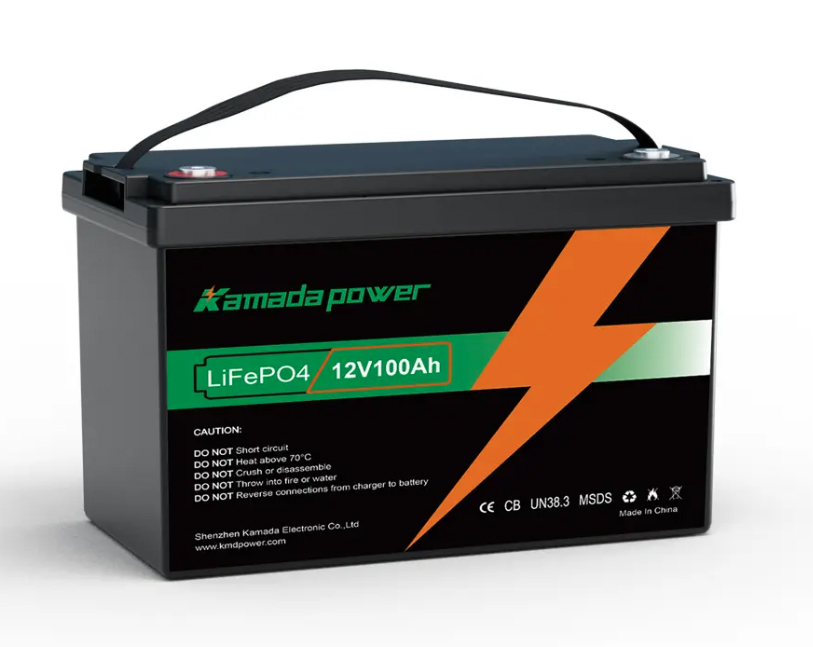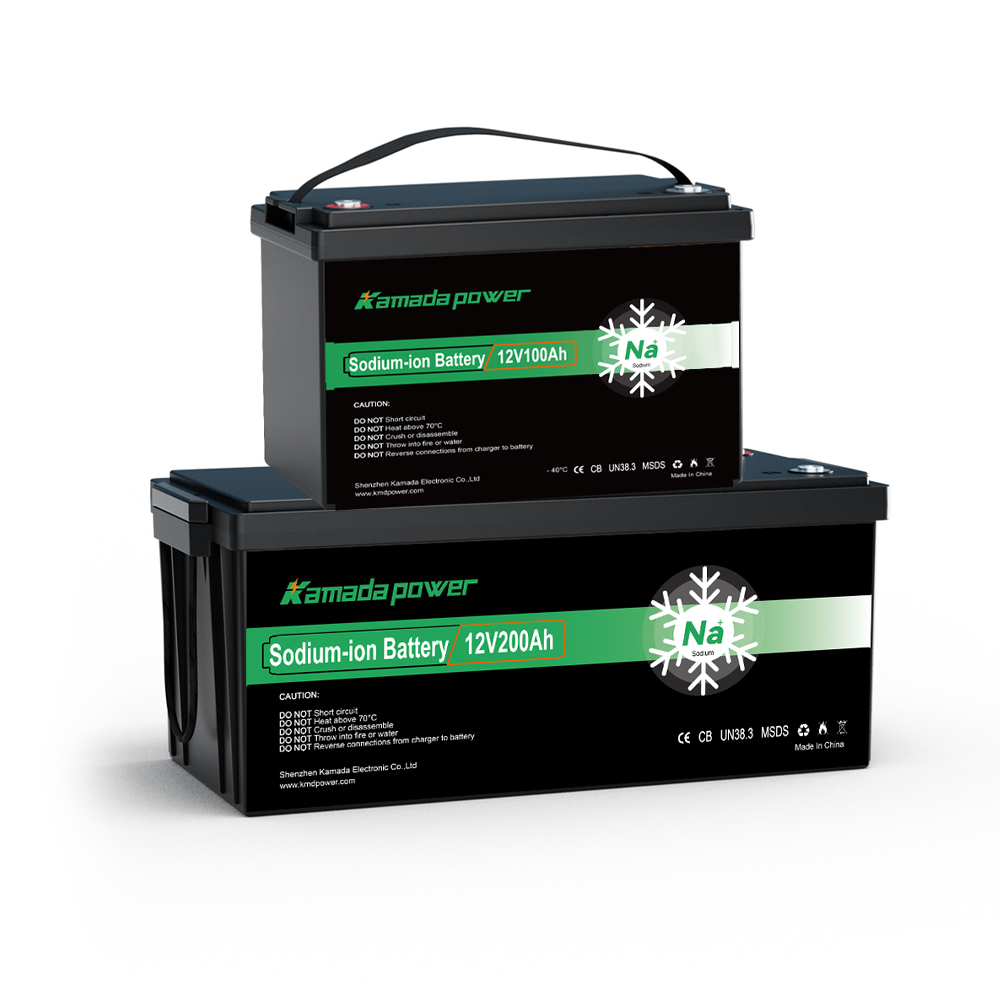8 Tips that Protect Your Industrial Batteries from Winter Weather. It’s 7 AM on a frigid January morning when your manager calls: half the forklift fleet is dead on the floor. With a critical shipment due, your entire operation has ground to a halt.
In my years working with industrial clients, I’ve seen this exact scenario far too many times. Winter puts batteries under serious strain, but avoiding this mess is all about smart preparation. Cold temperatures don’t kill a battery; they just slow its internal electrochemical reactions to a crawl. This slashes your available power (your CCA plummets) and makes recharging painfully slow. Here are eight expert-approved tips to ensure your equipment weathers the winter without a hitch.

12v 100ah lifepo4 battery

12v 100ah sodium ion battery
Why Cold Weather is a Battery’s Worst Nightmare
Think of your batteries like a crew of workers. On a normal day, they’re ready to deliver peak performance. But when it’s freezing, they’re stiff, slow, and can’t do the heavy lifting. What that means for your battery is significant voltage sag under load and a much lower effective capacity. A forklift battery that easily powers through a full shift in the summer might be completely spent in just six hours when the temperature drops.
Worse yet is the risk of total failure. For the lead-acid batteries that are the workhorses in most equipment, a low state of charge (SoC) in winter is a death sentence. The water in the electrolyte can literally freeze solid, expand, and crack the internal plates and the case. Keeping that battery fully charged is your single best line of defense against this kind of permanent, expensive damage.
8 Essential Tips to Winter-Proof Your Batteries
1. Keep It Fully Charged: Your #1 Defense
Let’s be clear: this is the golden rule. A fully charged lead-acid battery is safe from freezing down to about -76°F (-60°C). A discharged one, on the other hand, can freeze and crack at just 32°F (0°C). For your equipment, this means you need a charging protocol that everyone sticks to. Make sure operators return every vehicle and device to its charging station at the end of a shift. No exceptions. For backup power or seasonal equipment, a high-quality battery maintainer isn’t a nice-to-have; it’s essential insurance.
2. Clean the Terminals: A Simple Fix for a Hidden Problem
That crusty, blue-green buildup on battery terminals isn’t just ugly. Think of it as cholesterol in an artery—it chokes the flow of power. We’ve seen entire fleets underperform simply because of corroded terminals. Your preventative maintenance schedule must include a pre-winter check of all battery connections. A quick scrub with a wire brush and a baking soda/water mix can restore the solid electrical connection needed for powerful starts and efficient charging.
3. Park Smarter: Shelter from the Storm
This one’s simple. Batteries, like people, do better when they’re out of the wind. Whenever possible, store your equipment inside a heated or at least insulated building overnight. If a machine has to stay on an outdoor job site, parking it in a covered area or even just up against a building can shield it from the worst of the wind chill. It’s a small thing that can make a real difference for that first start in the morning.
4. Invest in an Industrial Battery Maintainer
A basic charger just pushes power. A smart maintainer, or tender, is a different animal altogether. It actively monitors the battery’s voltage and uses a multi-stage process to keep it at an optimal charge without ever overcharging. For assets that sit idle for long stretches—like the backup power on a vessel docked for the winter or emergency generators—a heavy-duty maintainer is the key to making sure they fire up the moment you need them.
5. Test It Before Winter Arrives
Here’s a trap we see a lot: a battery seems fine all summer, then fails on the first cold day. That’s because it may have lost a good chunk of its CCA capacity, a weakness the cold weather is quick to expose. Add battery testing to your autumn PM schedule. Use a professional-grade digital analyzer to get a true reading of its health. This lets you replace weak units proactively, before one of them causes a costly breakdown.
6. Avoid Inefficient Use Cycles
Cranking a heavy diesel engine takes a huge jolt of energy. Short trips—like starting a loader just to move it 50 feet and then shutting it down—are absolute battery killers. These short runs drain the battery deeply but don’t give the alternator nearly enough time to replace that charge. Make it clear to your operators why they need to let engines run long enough to properly top off the battery after a start.
7. Consider a Battery Blanket or Warmer
For operations in really cold climates, a battery blanket or block heater is a game-changer. These devices gently warm the battery’s core, keeping its internal chemistry in a much happier operating range. They’re indispensable for any critical equipment stored outdoors.
This is also where it pays to look at newer battery chemistries. A battery warmer is a great fix for lead-acid, but some modern technologies handle the cold better right out of the box. For a new Energy Storage System (ESS), for example, you might compare a standard LiFePO4 pack, which can have trouble charging below freezing, to a newer sodium-ion battery pack. Sodium-ion often has a wider operating temperature range, which could mean you don’t need complex heating systems, improving overall efficiency.
8. Storing Small Batteries? Bring Them Inside!
This goes for all the batteries powering your high-value portable gear: diagnostic tools, commercial drones, you name it. Don’t leave them in a cold truck overnight. Get your teams in the habit of bringing these lithium-ion packs inside. If you’re storing them for the winter, the sweet spot is a 40-60% state of charge in a cool, dry place. The built-in Battery Management System (BMS) does a lot to protect the pack, but simply getting it out of the extreme cold is the smartest move you can make.
Conclusion
Look, there’s no magic bullet for protecting your battery assets through the winter. It all comes down to building simple, consistent habits into your workflow. Sticking to a proactive charging schedule, doing routine maintenance, and using some common sense about shelter are the pillars that will prevent downtime. A few hours of preparation in the fall will absolutely save you days of frustration and thousands of dollars when the temperature plummets.
If you’re taking a hard look at your winter battery strategy or exploring new chemistries for your climate, contact us, our application engineers are ready to help. Let’s talk about your specific operational challenges and find a power solution you can count on.
FAQ
What is the proper procedure if we find a frozen lead-acid battery in our equipment?
First thing: Do not attempt to charge or jump-start a frozen battery. The ice inside can block the electrical path, causing a dangerous buildup of hydrogen gas. It can actually explode. The only safe procedure is to carefully move the battery to a room-temperature area and let it thaw out completely on its own. Once it’s thawed, check the case carefully for cracks. If you see any, the battery is toast. If not, you can then test it and try a slow recharge, but know that its service life has likely been shortened.
How can our maintenance team tell the difference between a battery failure and a charging system issue on our heavy machinery?
A good way to tell is by looking at when the problem shows up. If a machine is hard to start but runs fine once it’s going, your first suspect should be the battery. If it starts okay but the lights get dim, the gauges go haywire, or it dies while it’s running, you should be looking at the alternator and the charging system.
Can I use the same multi-bank charger for our AGM and newer lithium-ion forklift batteries?
That’s a critical question. The answer is almost always no—unless you have a modern, multi-chemistry charger that has very specific settings for both AGM and your type of Lithium-ion. The two chemistries need completely different charging profiles. Using a lead-acid charger on a lithium battery won’t just be ineffective; it can be dangerous by overriding the protections built into the battery’s BMS. Always check that your charger is explicitly compatible with the battery you’re connecting it to.